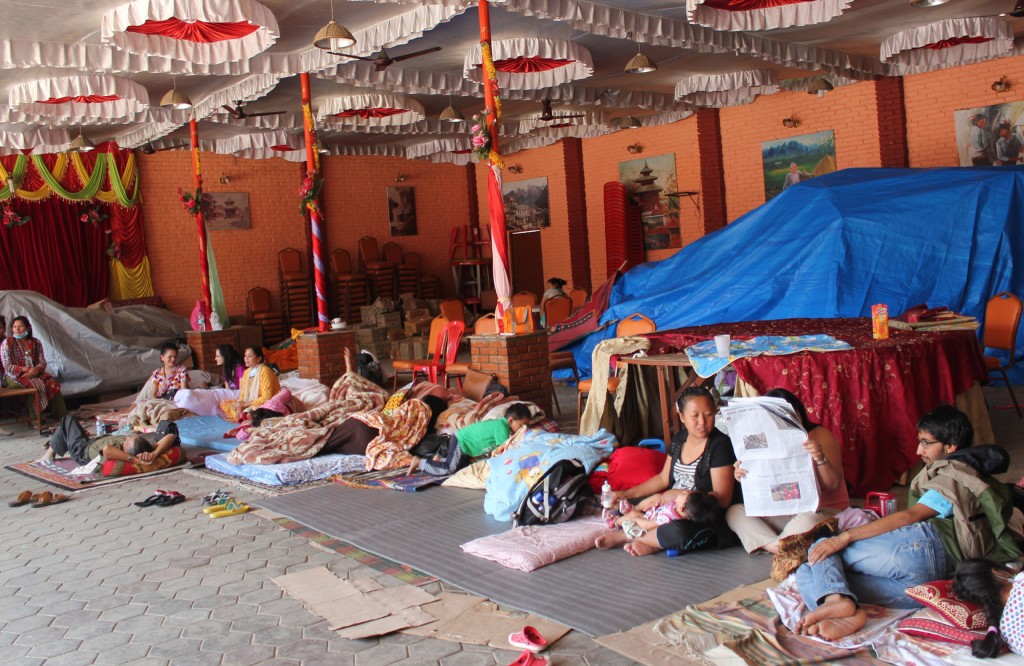
By Anto Akkara
The second major earthquake in less than three weeks spread renewed fears and dented the confidence of people, said church and charity workers.
“The death and devastation may be less, but the psychological impact is very high,” Bishop Paul Simick of Nepal told Catholic News Service May 13. “They were slowly recovering from the shock and the trauma and (were) trying to restart (their lives). Now they have been stunned by this unprecedented quake.”
More than 60 people, most of them trying to recover valuables from the debris of collapsed houses and buildings, died and more than 1,200 were injured when the magnitude-7.3 quake hit at 12:50 p.m.
“The fear is back and everyone is worried about the future. Many are sleeping in the open,” said Bishop Simick.
Josh Niraula, former coordinator of Caritas Asia, told CNS, “The massive quake has shattered more Nepalese minds and hearts and has generated more fear and worry for the future.”
“Those who were brave enough to come back to normal life are now hesitant, and fear of further quakes has dented their confidence,” Niraula said.
The May 12 quake seemed to contradict seismologists’ theory that the intensity of aftershocks would decline steadily while tremors could continue to persist after powerful quakes. It occurred after more than 150 minor aftershocks from the April 25 quake that killed more than 8,000 and destroyed or damaged more than half a million homes, in addition to commercial and other structures.
Bishop Simick also said he is getting reports of church buildings that developed serious cracks in different parts of Nepal.
More than two dozen staff at Caritas Nepal headquarters in Kathmandu could be seen working outside the building May 13 after engineers said the cracks that developed May 12 had made part of the building unsafe. The earthquake alarm in the three-story building — the coordinating center for more than a dozen international Catholic charities — buzzed twice May 13, adding to the fears.
St. Joseph’s School in Gorkha, about 80 miles from Kathmandu, developed serious cracks, and the principal’s residence had severe damage.
“It is not safe to stay in the building,” Father Dennis D’Souza, principal, told CNS. He said he was relieved the government had postponed the reopening of schools until the end of May.
Jesuit Father Robert Simick, parish priest in Tipling — a day’s travel by road and three days’ walk from Kathmandu — emailed Bishop Simick to report that one of his friends who eagerly carried out relief work to the victims of the April 25 quake “is now scared and not even able to drive his car.”
“Fear is very strong,” said Bhuni Bhandari, a senior staffer at a government hospital in Lalitpur, where more than 60 people injured from the May 12 quake were taken for treatment. “Most of them had fractures, and I was in the hospital (working) till 10 p.m.”
Bhandari is secretary of the residents’ association of his six-story apartment complex with 160 families in Nakhu, a suburb of Lalitpur.
“Our building is strong but there are some cracks here and there. You don’t know what will happen next. So, all families are staying here,” said Bhandari, who moved to the banquet hall next door.
Their worry was aggravated by the sight of the debris of the five-story medical clinic that blocked the road to the apartments and banquet. The clinic, with advance facilities for medical tests, was closed after it developed major cracks from the April 25 quake; it collapsed after the May 12 quake. – CNS